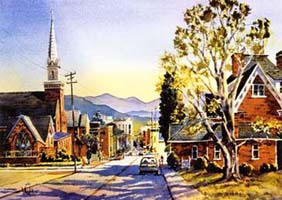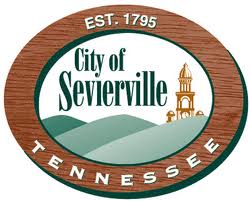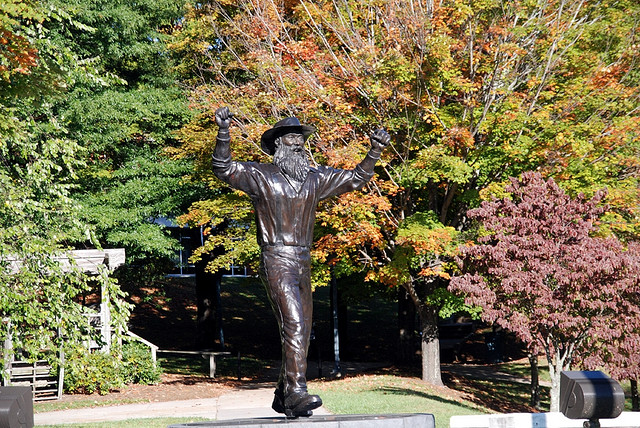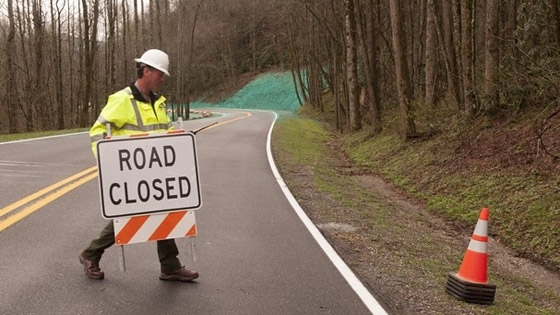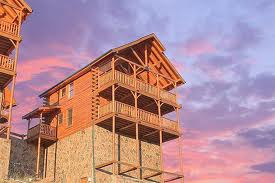The humble mountain communities of the Smoky Mountains have been celebrating the fall harvest and Thanksgiving before there were established societies and towns. Groups of farmers would gather at someones house, they might eat in the yard by the barn if the weather was good or if it was too chilly to eat outside they would crowd into the house that would come closest to holding them all. The location of the meal didn’t matter really, nor did the food, what matter was that they were all together.
The first official Thanksgiving day was November 26, 1789. George Washington declared the day a s a day of National thanksgiving, a day to celebrate the fact that we were no longer under the reign of the British. Of course, the people had church leaders and civic leaders telling them of the tale of the first Thanksgiving, which of course was celebrated by the pilgrims. This tradition had been handed down as oral tradition through the church and through community text books and school houses since the early 1700s. Obviously the people of the Smoky Mountains and the Southern Appalachian since the area became settled and then became a state.
Of course, the Thanksgiving celebrated by the southern Highlanders, as they were known, was different then some of the Thanksgiving celebrations in other parts of the country. These mountain farmers would might with those neighbors that they were close enough to to break bread together. Each farm produced those staples they would need for their subsistence through the winter months but they would make sure that they had something special for Thanksgiving. Let’s take a look at what one of these celebrations might have been like.
 The year is 1850. The people of Cades Cove have gathered at the Elijah Oliver Place (near the halfway point of the Cades Cove Loop Road if you are curious). The weather turned out breezy but nice so they are having the Thanksgiving celebration in the great outdoors with the Smoky Mountains as their backdrop. Neighbors from around the cove have brought food and family with them for the Thanksgiving Day festivities. The turkey is obvious choice for the meat of the day and if they were lucky when they were hunting they might even have two birds to serve for dinner instead of one. As friends and family keep arriving the table is filled with sides of every shape form and fashion. These settlers would have had vegetables and desserts made the fruits of their bountiful harvest. Corn, apples, green beans, late summer and fall greens, fresh baked bread and corn bread – all of it harvested form the ground and made with their own two hands. As the people trickle in the all sit around a table or around several tables and the patriarch of the Oliver family would have said a blessing of thanksgiving over the food. Thanks would be given for the harvest, for family, for friends and for the beautiful land that they settled in many years ago.
The year is 1850. The people of Cades Cove have gathered at the Elijah Oliver Place (near the halfway point of the Cades Cove Loop Road if you are curious). The weather turned out breezy but nice so they are having the Thanksgiving celebration in the great outdoors with the Smoky Mountains as their backdrop. Neighbors from around the cove have brought food and family with them for the Thanksgiving Day festivities. The turkey is obvious choice for the meat of the day and if they were lucky when they were hunting they might even have two birds to serve for dinner instead of one. As friends and family keep arriving the table is filled with sides of every shape form and fashion. These settlers would have had vegetables and desserts made the fruits of their bountiful harvest. Corn, apples, green beans, late summer and fall greens, fresh baked bread and corn bread – all of it harvested form the ground and made with their own two hands. As the people trickle in the all sit around a table or around several tables and the patriarch of the Oliver family would have said a blessing of thanksgiving over the food. Thanks would be given for the harvest, for family, for friends and for the beautiful land that they settled in many years ago.
Think about this as you bring in your family and friends for Thanksgiving. Think about the settlers that called the Smokies home and the work they would go through to have a Thanksgiving meal with their families.

